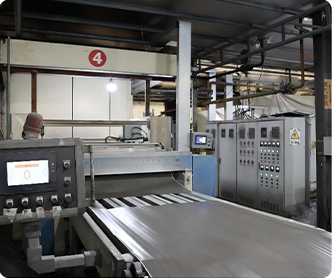- Home
- duplex paper manufacturing process exporter
डिस . 06, 2024 19:51 Back to list
duplex paper manufacturing process exporter
The Duplex Paper Manufacturing Process and Its Global Exporting Potential
Duplex paper, known for its high-quality surface and exceptional printing capabilities, has found its niche in various industries, including packaging, printing, and advertising. As businesses seek sustainable and efficient paper products, the duplex paper manufacturing process has gained significant attention from exporters around the world. This article explores the intricacies of duplex paper manufacturing and the potential for global exportation, highlighting its applications and market demand.
Understanding Duplex Paper
Duplex paper is a type of paperboard made from a combination of recycled and virgin fiber. It consists of two layers the top or front layer, which is smooth and often coated for high-quality printing, and the back layer, which is typically uncoated and less glossy. This paper is primarily used in the production of packaging materials, foldable boxes, and various promotional products due to its strength, brightness, and printability.
The appeal of duplex paper lies in its versatility. The front side can be customized for vibrant graphics and imagery, making it ideal for consumer goods packaging, while the back side provides a sturdy base that can handle product weight and shipping stress. This dual functionality has made duplex paper a preferred choice in the packaging sector, particularly for food and beverage, cosmetics, and electronics industries.
The Duplex Paper Manufacturing Process
The production of duplex paper involves several key stages, requiring advanced technology and skilled labor
.1. Pulping The process begins with the preparation of pulp from both recycled paper and virgin fibers. The choice of materials ensures a balance between quality and sustainability. The fibers are processed in large pulping machines that break down the raw materials to form a slurry.
2. Sheet Formation The slurry is then fed into a Fourdrinier machine or a similar device where it is spread evenly onto a moving conveyor belt. The water content is removed through pressing and vacuum suction, allowing the fibers to bond together to form a continuous sheet.
duplex paper manufacturing process exporter

3. Drying After forming the sheets, they are passed through a series of heated rollers to dry completely. This step is critical as it affects the final moisture content, strength, and surface characteristics of the duplex paper.
4. Coating For duplex paper intended for high-quality printing, a coating is often applied to the front side. This coating enhances printability, brightness, and smoothness, allowing for vibrant color reproduction and sharp imagery.
5. Cutting and Finishing Finally, the dried and coated sheets are cut into desired sizes. Additional finishing processes, such as embossing or laminating, may be applied depending on customer specifications.
Export Potential for Duplex Paper
Exporting duplex paper has become an attractive opportunity for manufacturers. As global demand for sustainable packaging solutions continues to rise, many countries are turning to duplex paper for its eco-friendly attributes and excellent performance characteristics.
Countries with robust manufacturing capabilities are well-positioned to enter the export market. The versatility of duplex paper allows it to penetrate multiple markets, including Asia, Europe, and North America. Particularly in regions focusing on reducing plastic usage, duplex paper serves as a viable alternative for sustainable packaging, aligning with environmental goals and consumer preferences.
Moreover, the rise of e-commerce has led to an increase in packaging needs, further driving up the demand for duplex paper. Exporters can leverage this growing sector by supplying high-quality duplex paper products tailored to various market requirements.
Conclusion
The duplex paper manufacturing process showcases a blend of tradition and innovation, resulting in a product that meets the demands of modern industries. As the global landscape shifts towards sustainable practices, exporters of duplex paper have an incredible opportunity to capitalize on this trend. By adhering to quality standards and promoting the eco-friendly benefits of duplex paper, manufacturers can position themselves as leaders in the competitive market of sustainable packaging solutions. The future of duplex paper, backed by its versatile applications and growing demand, remains promising in the global export arena.
Latest news
-
High Quality Duplex Board Paper for Packaging Solutions
NewsJul.23,2025
-
Premium Duplex Board Paper for High Quality Printing & Packaging
NewsJul.22,2025
-
Premium Duplex Board | Food Packaging & Printing Solutions
NewsJul.22,2025
-
65gsm ML1085 Paper Specs: Lightweight & Durable for Printing
NewsJul.20,2025
-
High-Quality Bathroom Cabinet Contact Paper – Durable & Stylish Leading Suppliers, Exporters, Manufacturers
NewsJul.08,2025
-
Premium Wood Contact Paper for Desk – Reliable Suppliers & Exporters
NewsJul.08,2025

